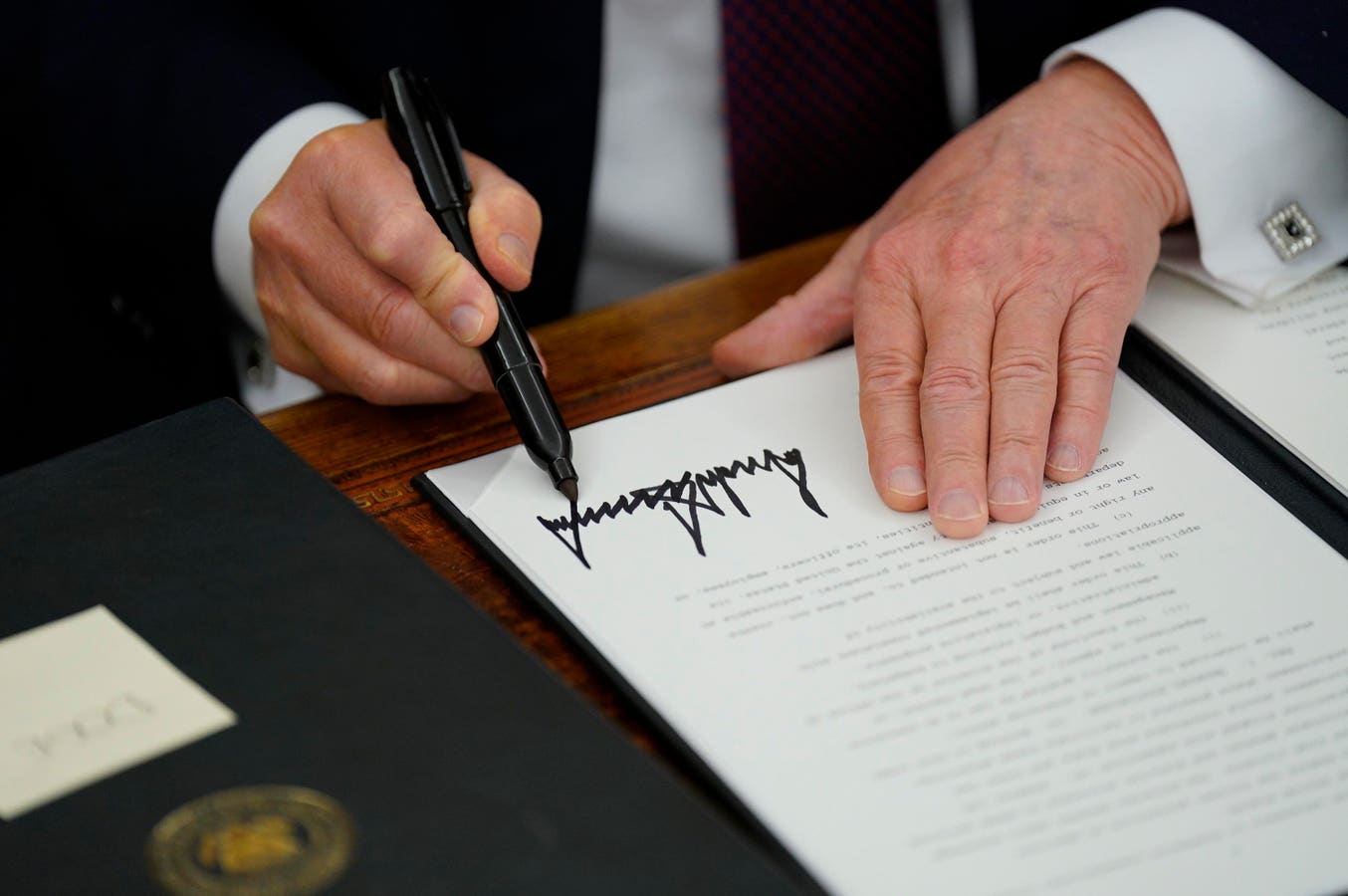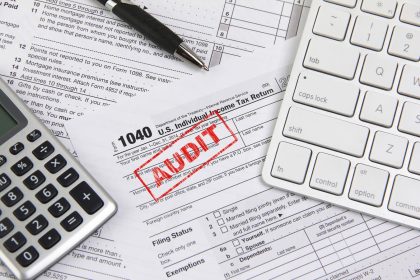President Donald Trump signed dozens of executive actions on his first day in office, including some that could impact your taxes. Two executive orders focused on federal employees, including the imposition of a hiring freeze and a requirement that federal government employees return to the office. Both could have immediate and significant consequences on the IRS workforce.
Return To In-Person Work
Trump signed an executive order requiring federal employees to return to work “as soon as practicable” on a full-time basis. The federal government is the nation’s largest employer, with over two million civilian employees.
According to a 2024 report from the U.S. Office of Personnel Management (OPM), most (54%) federal employees already work in offices full-time. The report indicates that as of May 2024, approximately 50% of federal workers work in roles that are not eligible for telework, including those who work onsite providing healthcare to veterans, inspecting the food supply, and managing federal natural resources. The report noted that those eligible for telework spent approximately 60% of their working hours in person at agency-assigned job sites. About 10%, or 228,000 employees, work entirely remotely.
(The OPM report is no longer available on the White House website but is available through the Federal Depository Library Program Electronic Collection (FDLP/EC) Archive.)
Of those jobs, 109,268 employees work under the Department of the Treasury. The IRS is the largest agency in the department, with 82,990 full-time equivalent (FTE) positions in fiscal year 2023. Nearly 90,000 Treasury employees are remote work eligible.
Last year, former IRS Commissioner Danny Werfel testified before the House Committee on Ways and Means that roughly 50% of IRS employees work remotely at any given time. Congressman David Kustoff (R-Tenn.) questioned whether this policy was best for taxpayers, citing difficulties communicating with the IRS and concerns about data security.
You can watch the exchange here:
However, the IRS—and other federal agencies—have pointed to the private sector, noting that it has managed to keep levels of service and data protection in check with remote workers. Since the government competes with the private sector for jobs, dialing flexible work arrangements back could make it harder for federal agencies to compete for talent.
Another argument for in-person work concerns the unused real estate owned or leased by the federal government. The Treasury currently occupies 31.5 million square feet of space. Of that, just under 20% is Treasury-controlled, and the remainder is U.S. General Services Administration-controlled space. The Treasury-controlled inventory is fully utilized, and there are currently no planned disposals or space reductions. Before the return to in-person work order, the Treasury has projected that it would relinquish over 800,000 rentable square feet of office space by the end of fiscal year 2027.
The move to force a return to office could send federal workers, including IRS employees, scurrying for the door. That’s the plan, according to Elon Musk and Vivek Ramaswamy. In a November 2024 op-ed for the Wall Street Journal, the pair appointed by Trump to lead his Department of Government Efficiency, or DOGE, noted that returning to in-person work “would result in a wave of voluntary terminations that we welcome.”
(Ramaswamy has since announced plans to leave DOGE to run for office.)
Hiring Freezes For Federal Agencies
Trump also issued an executive order freezing hiring for most federal agencies. Specifically, the order says that “no Federal civilian position that is vacant at noon on January 20, 2025, may be filled, and no new position may be created except as otherwise provided for in this memorandum or other applicable law. Except as provided below, this freeze applies to all executive departments and agencies regardless of their sources of operational and programmatic funding.”
The hiring freeze does not apply to the military or “immigration enforcement, national security, or public safety.”
The freeze is intended to be temporary, with one exception—the IRS. Under the executive order, within 90 days, the Director of the Office of Management and Budget (OMB), in consultation with OPM and DOGE, must submit a plan to reduce the size of the government’s workforce. Once the plan is submitted, the freeze will expire for all agencies other than the IRS. With respect to the tax agency, the hiring freeze will remain in place until the Secretary of the Treasury, in consultation with OMB and DOGE, “determines that it is in the national interest to lift the freeze.”
This would clearly put a halt to IRS plans to boost their roster. With funding from the Inflation Reduction Act, the IRS has been actively hiring additional support. In 2023, the IRS offered positions to more than 560 new accountants in November and December—those new hires were expected to focus on work pursuing high-wealth individuals, complex partnerships, and large corporations that do not pay taxes owed. And, at a December 2023 hiring event in Houston, the IRS hired 160 accountants in two days—a process that typically takes three to six months.
The reason for the hiring, explained Werfel, is that a previous lack of staffing has caused the quality of taxpayer service to decline (taxpayers and tax professionals like me who have sat on hold for hours with the IRS can confirm this to be true). With the extra funding, the IRS said, that was changing. In a message delivered in April of 2024, Werfel noted that the IRS call centers were working at peak efficiency helping taxpayers, answering over one million more taxpayer calls than the agency answered a year ago—a 16% increase from 2023—and three million more calls than the IRS answered in 2022. At the same time, Werfel also reported that callers to the IRS experienced faster response times on the main phone lines. Instead of a 27-minute wait in 2022, the IRS answered calls, on average, in just over 3 minutes.
In her most recent annual report to Congress, the National Taxpayer Advocate, Erin Collins, noted, “The taxpayer experience has noticeably improved… In 2024, taxpayers and practitioners experienced better service, generally received timely refunds, and faced shorter wait times to reach customer service representatives (CSRs), with nine million more telephone calls answered by employees in fiscal year (FY) 2024 as compared with FY 2022.” Many of those improvements, she notes, “have been made possible by multiyear funding provided by Congress.”
That funding remains in jeopardy—that’s in addition to these executive orders.
With the IRS planning to open tax season next week, a hiring freeze could have an immediate impact. As a result, taxpayers may feel the pinch—it’s likely that with reduced staff, tax returns could take longer to process and taxpayers may have to wait to see their refunds.
What Is An Executive Order?
As the orders fly, some voters may wonder exactly what an executive order might be. The answer can be tricky since there’s no explicit definition to be found in the Constitution, but generally, an executive order is a directive by the President focused on federal agencies.
Executive orders aren’t exactly laws—those originate in Congress—but are typically legally binding and enforceable. They don’t require Congressional approval to take effect and Congress cannot simply declare them invalid. An executive order can, however, be overturned if it are found to lack legal or statutory authority—that can be the result of a court order. Otherwise, they remain in force until they are revoked or expire.
History Of Executive Orders
Every U.S. president has issued executive orders—with the exception of William Henry Harrison.
Our first president, George Washington, issued eight. Those included two focused on taxes. Specifically, in 1792, in response to “certain violent and unwarrantable proceedings” (known as the Whiskey Rebellion), Washington issued an executive order urging those unhappy with a tax on liquor to “refrain and desist from all unlawful combinations and proceedings whatsoever.” That didn’t quite work as planned—the Whiskey Rebellion would continue through 1794. That year, Washington issued another executive order, this one calling upon 12,000 militia to put an end to the violence. (In 1795, he pardoned those involved.)
The most well-known executive order was issued by President Lincoln—the Emancipation Proclamation, which declared freedom for slaves in the then-Confederate States. Lincoln also issued at least one tax-related executive order in response to brand new tax measures passed by Congress in 1862, which called on the president to declare where to collect certain taxes.
Executive orders have grown more popular since the early years of our democracy. Trump signed 220 executive orders between 2017 and 2021. (For comparison, President Biden signed 160 executive orders between 2021 and 2025.)
Since the Office of the Federal Register (OFR) can’t publish any presidential documents until after the President signs them, there is often a delay of a day or two between the signing and publication of the document. If you’re looking for a recently signed Presidential document, including in the most recent set of executive orders, you can find it on the White House website.
Read the full article here

















